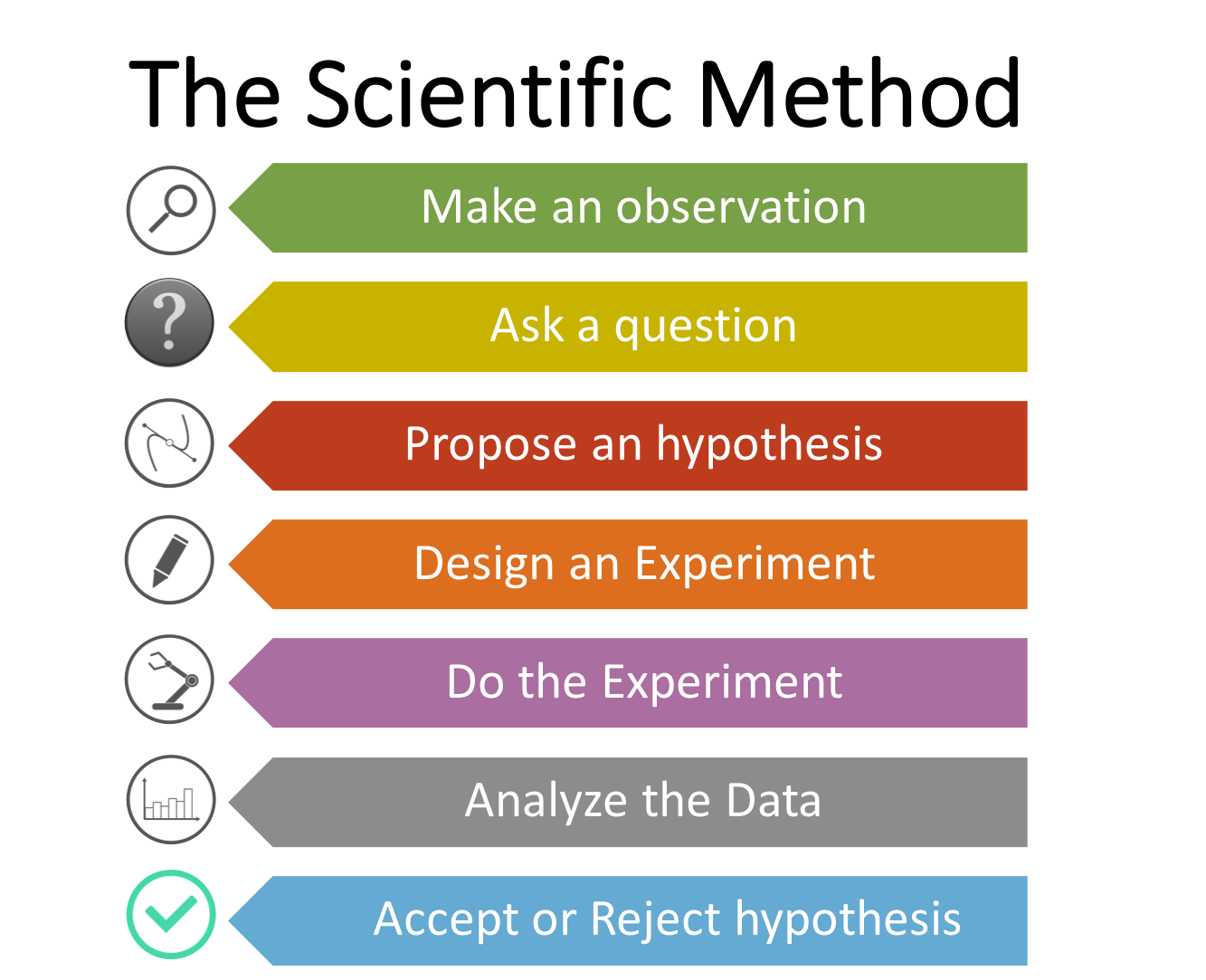1.1.2 Experiment: Springs and Elastic Behaviour of Materials

In this course, we will show you several experiments to illustrate and visualize the concepts we are talking about. In many instances you will also be able to carry out these experiments at home as well.
You can find the first video of our chief experimentalist, Hannah Hypothesis, below!
For every experiment, we follow the scientific method, which consists of seven steps, listed in the figure on your left.
The scientific method has been a systematic way of working in the Natural Sciences since the 17th century, and is based on observing, being curious as to the reasons why we see what we see, making an assumption (our hypothesis), and then investigating whether the assumption we made is true or not.
The great thing about this method is that a “NO” result or rejecting a hypothesis is not a failure, but a reason to go and do more research on what is the right explanation for the phenomena we observe.
Now let’s put this into practice in our first experiment!
Materials:
- A spring that is not too flexible
- A stand of some sort to suspend the spring
- Two hooks: one to suspend the spring, and another for the weight holder
- A ruler or measuring tape
- Small weights of approximately 20 𝑔𝑟𝑎𝑚𝑠 or 1 𝑜𝑧 each, or an object which you can easily determine the weight by weighing them on a kitchen scale first (marbles work well!)
- A tiny toy bucket or a plastic cup with wire
Instructions:
- Hang the hook from the stand and suspend the spring from the first hook.
- Suspend the other hook from the spring and hang the bucket or cup from it. This is now your neutral position.
- Place your ruler or measurement tape next to it and determine your starting point, noting it down as 𝑥 𝑐𝑚 or 𝑖𝑛𝑐ℎ𝑒𝑠.
- Add small increments of weight, noting down the total weight and the new ruler position of the spring every time.
- Repeat the previous step four or five times to get a sufficient number of data points. Note: if your spring is very stiff, your readings may be very close together. If this is the case, add more weights at every measurement point (3 instead of 1 marble, for instance). If your spring is too flexible and you cannot measure because the spring has hit the bottom surface, you may need to look for a different spring.
Analysis:
- To work out the spring coefficient, deduct the initial starting point from all your displacement measurements such that you get a table with the true extension of the spring and the weights, starting with the first point being 0 𝑔𝑟𝑎𝑚𝑠 and 0 𝑐𝑚.
- Plot each data point, using either a computer with Excel or on square paper, by putting the weight on the vertical axis and the spring displacement on the horizontal axis.
- To determine the spring coefficient, draw a straight line that runs through most of your measurement points and determine the slope. Your spring constant will now be in grams per centimeter, which assuming that the gravitational acceleration is equal to 10 𝑚/𝑠2 is equal to Newton per meter [𝑁/𝑚]. Note: if you cannot draw a straight line through the data points, your spring probably is not behaving linearly, so it may be best to find a new one!
Good luck!



